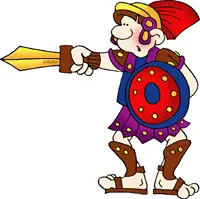Augustus Altar of Peace
The ancient Romans were instrumental in building monuments to great victories in battle.
But they also built monuments for their leaders and emperors. One such monument is the Augustus’ Altar of Peace, also known as Ara Pacis in Latin.
This particular altar was constructed for the period of peace that Emperor Augustus brought to the Roman Empire.
Why construct the Augustus’ Altar of Peace?
Augustus’ rise of power from 27 B.C.E., ancient Rome entered into the period known as Pax Romana or simply the Roman peace.
With only a few instances of disturbances during the next two centuries, ancient Rome was peaceful. During his time as emperor Augustus worried about how he was viewed by the public.
He did not want to be seen as a tyrant or authoritarian emperor. Augustus knew from his adoptive father, Julius Caesar, that a person could take control with absolute power as long as the actions were not obvious.
Augustus led by example of how to be a good Roman citizen and portrayed himself as a protector of the Roman Republic. The Augustus’ Altar of Peace was a tribute to this period of peace in ancient Rome.
Augustus’ Altar of Peace
The altar was constructed between 13 B.C.E. to 9 B.C.E. It is located within the Campus Martius, known as the Field of Mars. The altar was constructed to celebrate his return from Spain and Gaul.
The altar is quite remarkable in design and in construction. Altars in ancient Rome were built outside because sacrifices were not made inside temples. The entire altar is built from Italian Luna marble.
The three-meter altar is set upon a pedestal that is seven meters tall within an open-air structure with four walls that are over 11 meters tall. The pedestal is decorated with Vestal Virgins, sacrificial animals, and priests.
The interior walls surrounding the Augustus’ Altar of Peace have engravings of fruit, flowers draped over the necks of ox heads.
The exterior walls have designs that include mythical figures such as a she-wolf nursing Romulus and Remus as well as a female with two children that represent Mother Earth. Another wall includes the designs of senators, priests, families, and magistrates.
There is also a wall that depicts Augustus and his Imperial family. Walls also show people talking with each other, including families with children that actually look bored with the adult conversations taking place between the figures carved on the walls.
Discovering Augustus’ Altar of Peace
Pieces of the altar were discovered around 1568, 1859, and 1903 C.E. numerous fragments were also found within several museums around Europe. During the 1930s under the Mussolini rule, the altar was reassembled piece by piece. Today, Augustus’ Altar of Peace now resides within the Museum of the Ara Pacis in Rome.
Facts about Augustus’ Altar of Peace
- Augustus was emperor from 27 B.C.E. until his death in 14 C.E.
- During his reign, Augustus wanted the public to view him as a model Roman citizen and not a tyrant or authoritative leader.
- Augustus’ Altar of Peace was constructed from 13 B.C.E. to 9 B.C.E.
- The altar was to memorialize a period of peace in ancient Rome known as the Pax Romana.
- The altar was built from Italian Luna marble and was located within the Campus Martius or Field of Mars.
- Altars in ancient Rome were constructed outside to accommodate sacrifices to their gods.
- The walls of the altar are designed with several people, including children, senators, magistrates, and one wall shows a she-wolf feeding Romulus and Remus.
- The altar was discovered in 1538 C.E., and pieces were later found in several museums around Europe. Today, the reassembled altar is located in the Museum of the Ara Pacis.
What did you learn?
- What type of marble was used for constructing Augustus’ Altar of Peace?
Italian Luna marble
- Where was the original location of Augustus’ Altar of Peace?
Campus Martius also is known as the Field of Mars
- What is the time period known as during the rule of Augustus in ancient Rome?
Pax Romana or Roman Peace
- What mythical figure is portrayed on one of the exterior walls?
A she-wolf with Romulus and Remus
- What type of person did Augustus want the public to view him as while he was emperor of Rome?
A model Roman citizen



